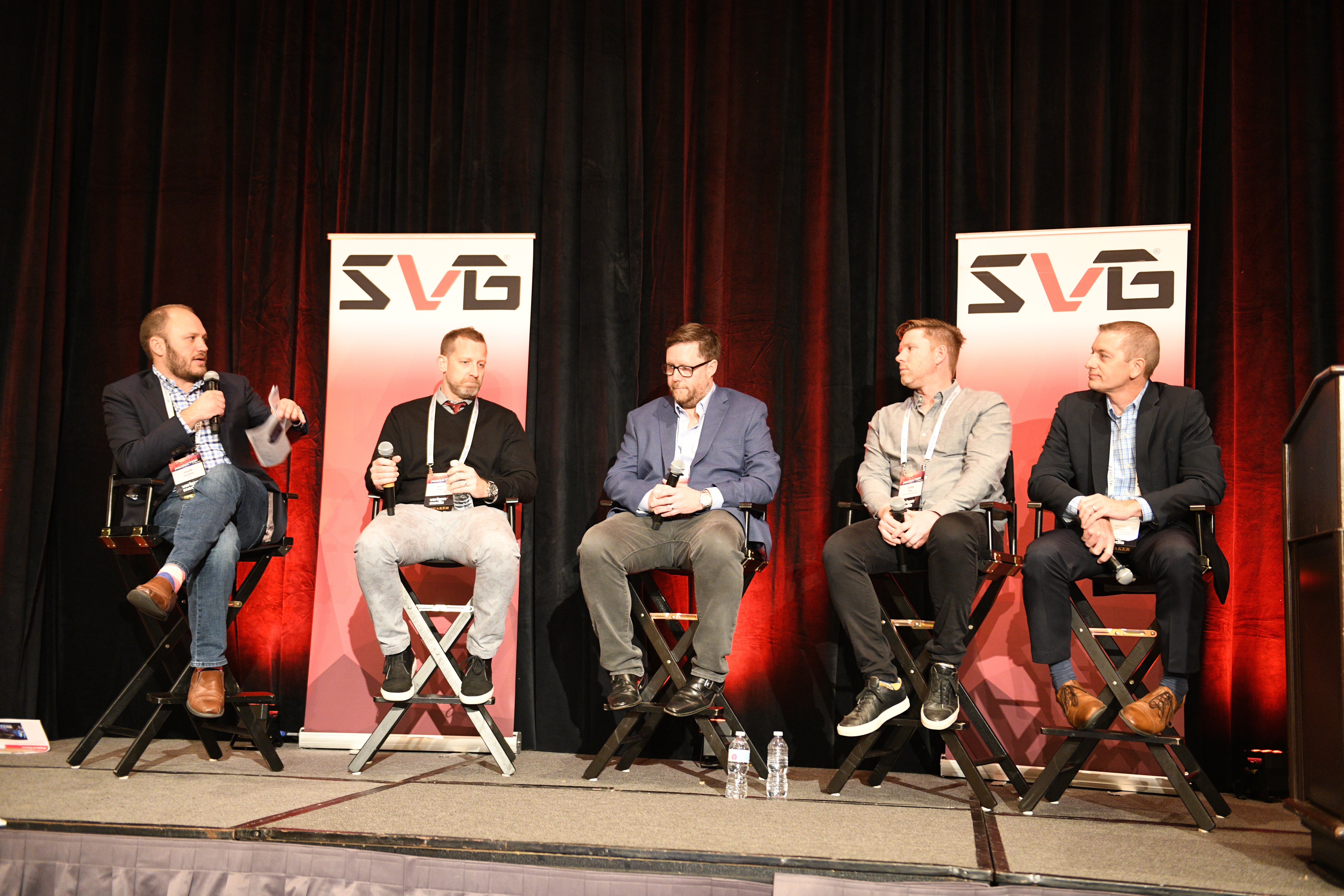2019 Esports Production Summit: Pro Leagues Embrace Esports To Reach New Fans
Managing workflow, tips and tricks, constant action are major challenges
Story Highlights
Professional sports leagues continue to embrace esports, and their efforts was the topic of discussion during one of the panels at SVG’s Esports Production Summit last week in Los Angeles.

From left: SVG’s Jason Dachman moderated a panel comprising NBA’s Matt Arden, EA’s Joe Lynch, Defacto Entertainment’s Adam Poel, and NASCAR’s Jeff Politsch at the Esports Production Summit.
Matt Arden, head of content and media, NBA 2K League, NBA, emphasized the importance of managing workflow, with upwards of 55-60 operators involved in every NBA 2K event.
“The need [is] to be able to turn on a dime, and everyone has to be comfortable abandoning a rundown,” he explained. “Insights have to flow up to the front bench, and it is definitely a hand-raise environment, where information flows freely. With four game admins and game operators, there is a whole host of non-traditional production in the truck. You’re overseeing a much larger broadcast than just calling shots.”
One thing everyone agreed on is that, given how much the competition matters, the tips and tricks, often done on a VOD basis, are essential. “We doubled down on tips and tricks,” Arden reported.
Joe Lynch, head of broadcast, EA, concurred, adding that EA finds that about 90% of fans watch so that they can learn and get better. With upwards of 12 hours of content created a day, there is plenty of fodder for tips and tricks.
“Tips and tricks are always what people want,” he added.
One of the unique challenges facing the traditional leagues when it comes to esports is serving all the fans. NBA 2K, for example, has 13 in-game cameras, and producing the coverage in a way that appeals to the novice and the hardcore fan is a key goal.
“The hardcore fan is so adamant about the way they like the coverage,” said Arden. “Minute to minute, it’s a struggle to try and crack, but it is fun to try and crack it.”
Jeff Politsch, head of broadcast, eNASCAR, NASCAR Productions, said that his production control is very traditional, with upwards of six observers plus a traditional-production person keeping eyes open for various battles. “They want to give the directors what they need,” he said.
NASCAR also does a two-box, with the game in one box and the drivers in the other. “Viewers can watch what they want to watch,” he explained. “Going forward, we have tons of other opportunities and options to figure out what the audience wants. It’s always evolving.”
Another challenge is that the constant action in esports competitions makes it difficult to fit in feature stories and profiles that can enrich the coverage. The latest version of Madden is much more run-heavy, and that makes it particularly difficult to get stories in because the clock is almost always ticking.
“You can do a five-minute piece and just watch the viewership go down,” said Lynch. “And worse, you can’t bail out of it.”
The NBA2K challenge in storytelling is that there is only a six-week period to learn about the players and attempt to create content. As a result, the league creates very quick, short-form documentary series, like Draft Hopefuls, that can be shot in a day.
Adam Poel, partner/director, production, Defacto Entertainment; supervising broadcast producer, NBA 2K League, has found that adapting to a new way of doing a broadcast has been fulfilling. “The fans are not shy about letting you know what they want,” he noted.
And, although a new game may seem small today, you never know where it might end up, he added: “Small doesn’t mean it won’t become like League of Legends or bigger.”
